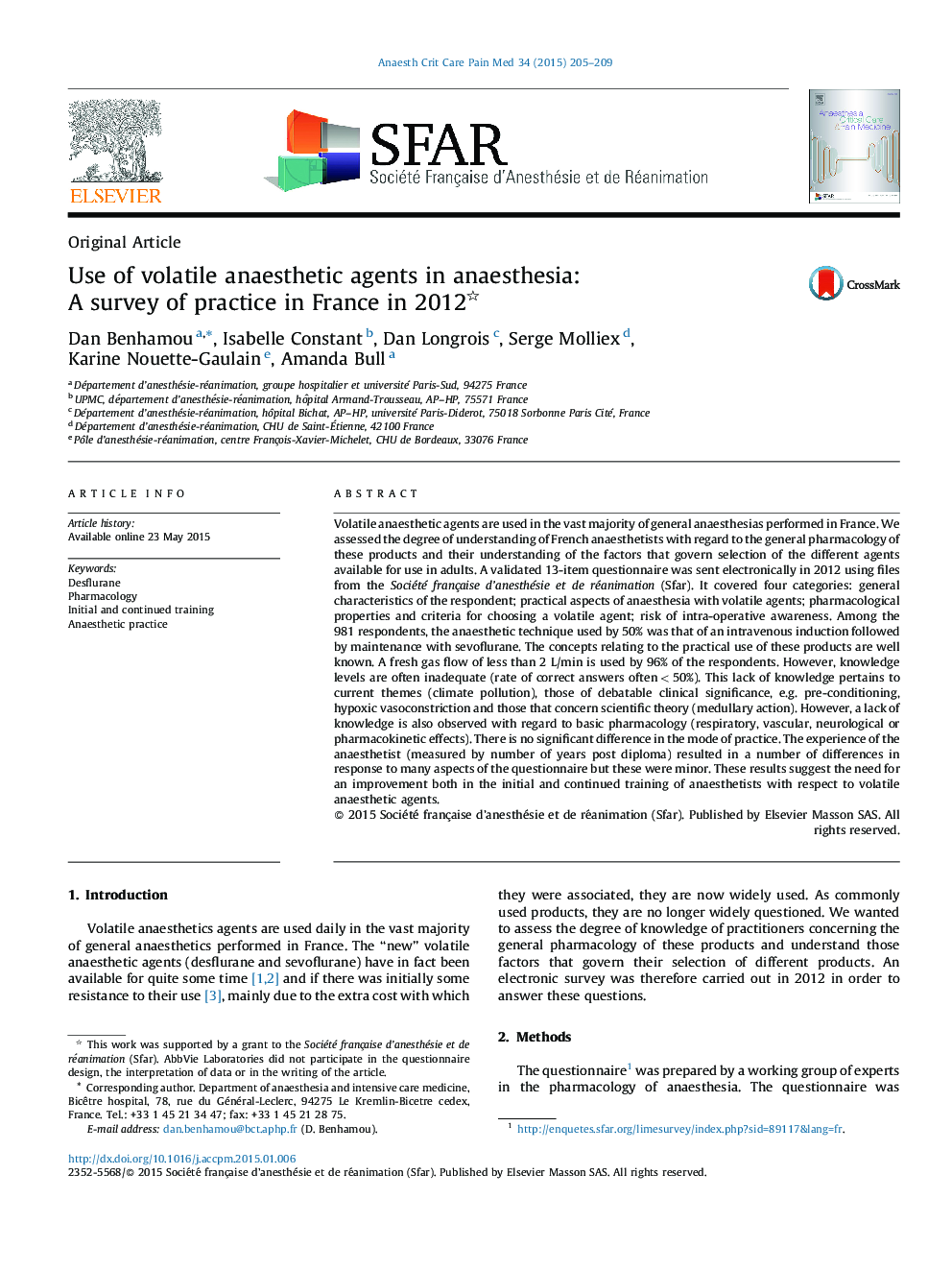| کد مقاله | کد نشریه | سال انتشار | مقاله انگلیسی | نسخه تمام متن |
|---|---|---|---|---|
| 2741923 | 1148570 | 2015 | 5 صفحه PDF | دانلود رایگان |
Volatile anaesthetic agents are used in the vast majority of general anaesthesias performed in France. We assessed the degree of understanding of French anaesthetists with regard to the general pharmacology of these products and their understanding of the factors that govern selection of the different agents available for use in adults. A validated 13-item questionnaire was sent electronically in 2012 using files from the Société française d’anesthésie et de réanimation (Sfar). It covered four categories: general characteristics of the respondent; practical aspects of anaesthesia with volatile agents; pharmacological properties and criteria for choosing a volatile agent; risk of intra-operative awareness. Among the 981 respondents, the anaesthetic technique used by 50% was that of an intravenous induction followed by maintenance with sevoflurane. The concepts relating to the practical use of these products are well known. A fresh gas flow of less than 2 L/min is used by 96% of the respondents. However, knowledge levels are often inadequate (rate of correct answers often < 50%). This lack of knowledge pertains to current themes (climate pollution), those of debatable clinical significance, e.g. pre-conditioning, hypoxic vasoconstriction and those that concern scientific theory (medullary action). However, a lack of knowledge is also observed with regard to basic pharmacology (respiratory, vascular, neurological or pharmacokinetic effects). There is no significant difference in the mode of practice. The experience of the anaesthetist (measured by number of years post diploma) resulted in a number of differences in response to many aspects of the questionnaire but these were minor. These results suggest the need for an improvement both in the initial and continued training of anaesthetists with respect to volatile anaesthetic agents.
Journal: Anaesthesia Critical Care & Pain Medicine - Volume 34, Issue 4, August 2015, Pages 205–209
